Cobblestones are the WORST. They suck, they hurt, and they are absolutely EVERYWHERE in Europe. As a passenger, your discomfort is defined by how spread apart each individual stone is. The closer they sit together, the more likely it is that you will receive an all-expenses-paid, skin-tingling, muscle-vibrating butt massage. Now, before you get too excited by this seemingly wonderful gift, I must warn you of the long term consequences of this situation. You should prepare for your butt to go numb, to get pins and needles in your legs and feet (or foot), and to be incredibly uncomfortable until your wheels land back on flat ground. Of course, this is the milder version of the story. If the stones are mis-matched in height and separated by deep pits of worn-away cement, then hold on, you are in for a wild ride, my friend.
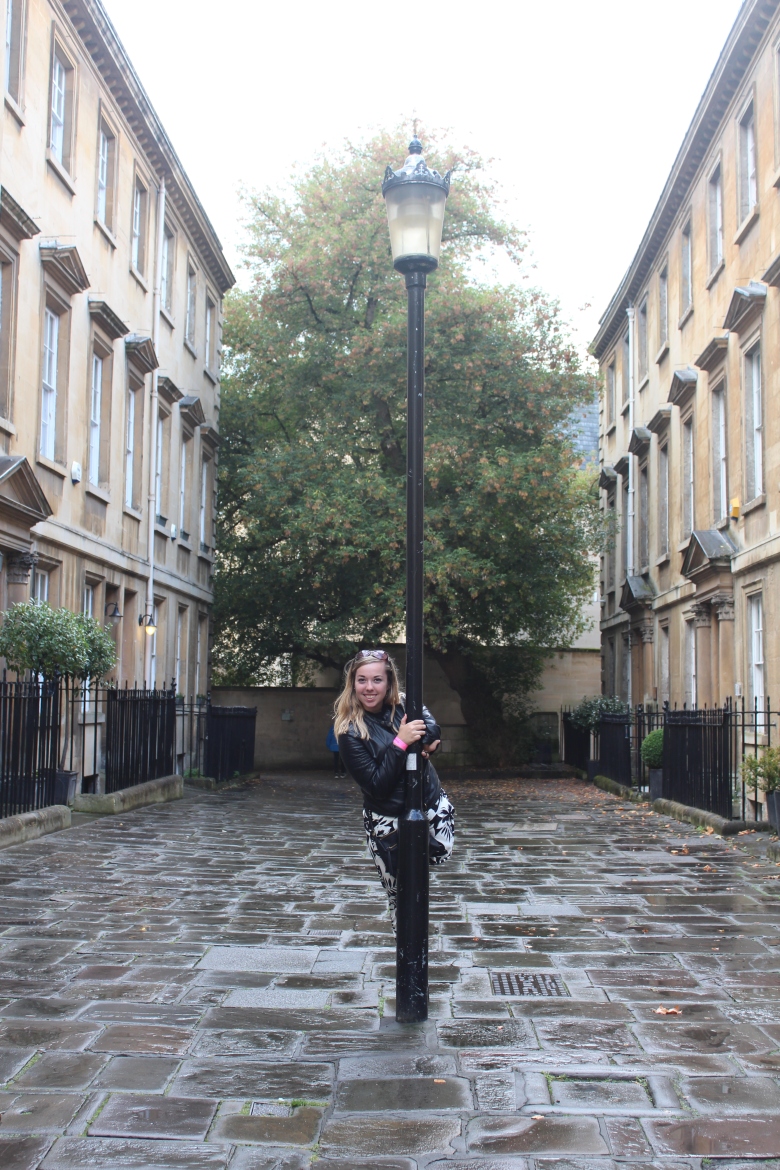
Being a passenger in this situation, though displeasing, is manageable. Being the driver, on the other hand, takes concentration, skill, and determination. You cannot haphazardly push someone over uneven rocks permanently placed into the ground and you most certainly cannot do it if you are not one hundred percent committed to the cause. Basically, what I am trying to say is that you really have to care about the person in the wheelchair to put yourself through the pain and grit that you submit yourself to when dealing with cobblestones.
Is the pain dire? No, but just as you get blisters on your heels when you wear a new pair of shoes for too long, if you’re pushing a wheelchair around on rough surfaces for hours on end, your hands may be a little red and sore by the end of the day. Add in some hills and stop-and-go traffic, and you have yourself a full body workout.
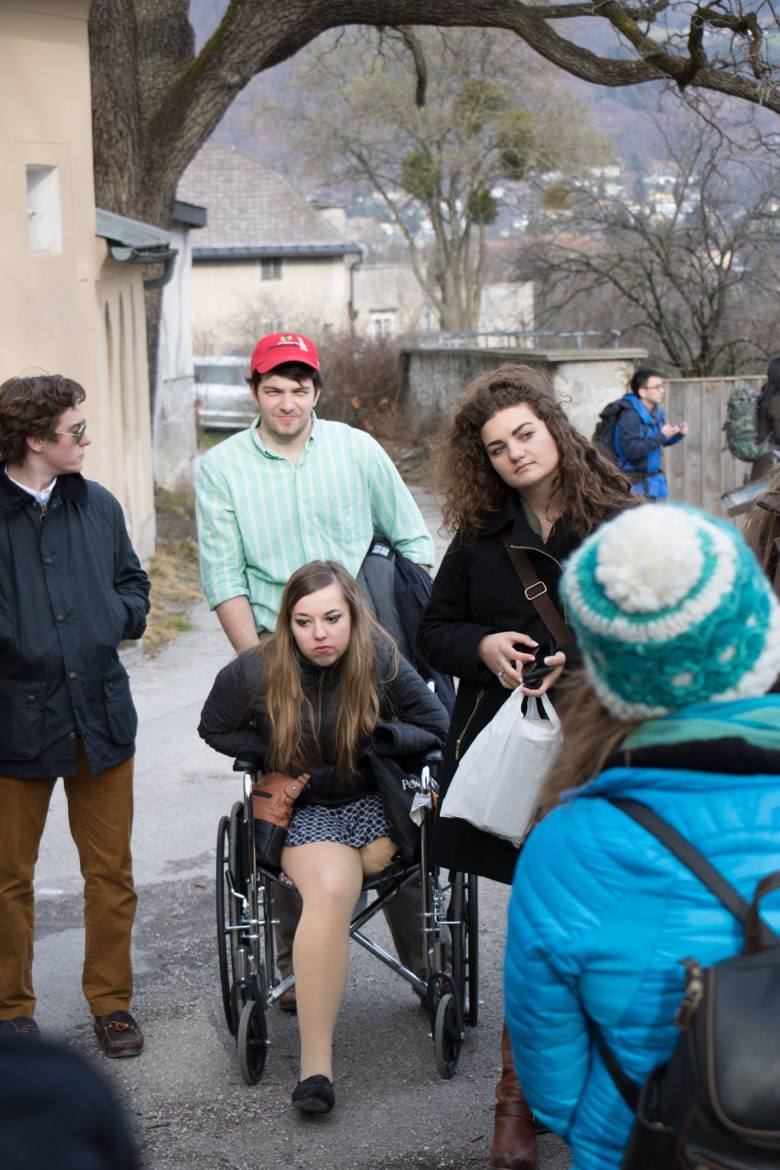
I know how difficult it can be to travel with me. Whether a transatlantic flight is involved or not, when I am in the picture, extra care and planning needs to be added to the itinerary. Whenever a new travel opportunity comes my way, I always pause and evaluate my desire to visit the destination versus the guilt I know I will feel the entire time I am there. Perhaps I am selfish or maybe I just like living a little on the edge, but I have never let the latter fear win.
Like many people in this world, my self-confidence is the thinnest part of who I am. Every situation that comes my way requires hours of analyzation before even a preliminary decision can be reached. I know that this distress is not aided by my disability. Being in a wheelchair has left me feeling inadequate and unable to receive love, have desires, or feel completely comfortable around other people. So, when I have decided to take on these travel opportunities in the past, believe me when I say that the decision was anything but easy.
On my first trip to Europe, I attempted to wheel myself across the central square of Salzburg, Austria to eat lunch on my own. We had three hours set aside for free time and I hardly knew anyone in the group I was traveling with. Instead of putting myself out there and asking to join in with the others, I opted for the arguably easier option of sitting by myself for three hours at the coffee shop I saw across the way. Luckily, a young man from the group saw what I was doing, walked over, and stood in front of me so I couldn’t easily go around.
“What the hell do you think you’re doing?” he sassily asked.
“Getting lunch,” I responded, trying to sound confident in my decision.
I clearly failed as he rolled his eyes, got behind me, and began to push me over towards his group of friends without so much as another word.
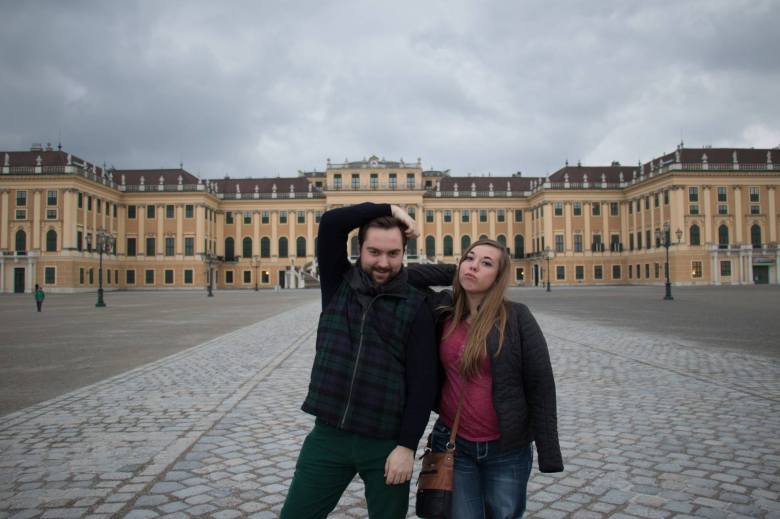
To this day, I do not think that he knows just how important that moment was to me. I was 19 years old at the time and a freshman in college. All I wanted was to fit in and feel accepted by my peers, and though I still feel an overwhelming amount of fear and anxiety whenever I travel with new people for the first time, I have faith that the people I am with are good and kindhearted.
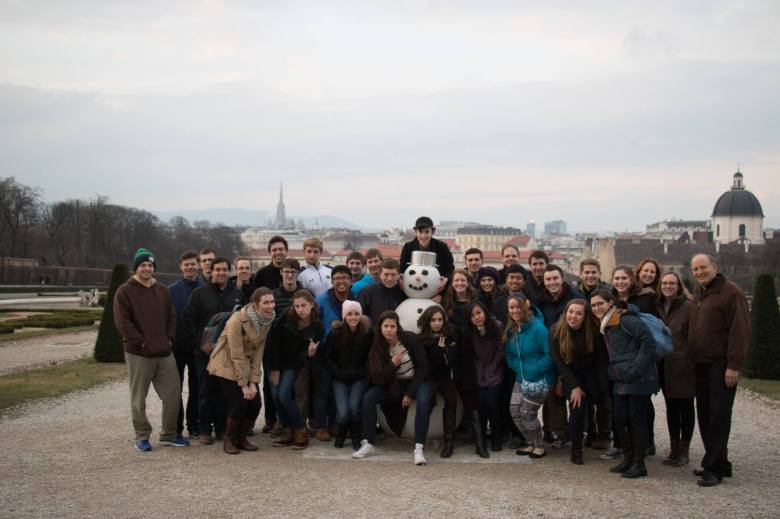
There is no rulebook on how to navigate asking strangers for help. There is nothing that tells me that I need not worry that they will reject my request or be internally upset that they must be inconvenienced by my presence. There is no agreed upon scale regarding what is too much for me to ask someone to do for me.
I do my best to figure it out as I go, oftentimes missing out on opportunities in order to ensure I do not become a bother. This past year, is a great example of that. After enduring a less than perfect travel experience with a group of people I knew, I had a few friends tell me they wish I’d been more vocal about my concerns in the moment. Of course, I wish I had been too, but it’s hard to communicate and advocate for yourself all of the time. Sometimes, you just want others to be more aware.
When I went to DC with my fellow Notre Dame interns in July, the fear that followed me to Europe freshmen year was still very much present. That said, this time around, I had the negative excursion mentioned above and a newfound proclivity towards voicing my concerns about disability on my side. I wasn’t perfect, but perfection can’t be expected so quickly when one is trying to not only maneuver their way through new territory, but also change the way their inner mechanics work.
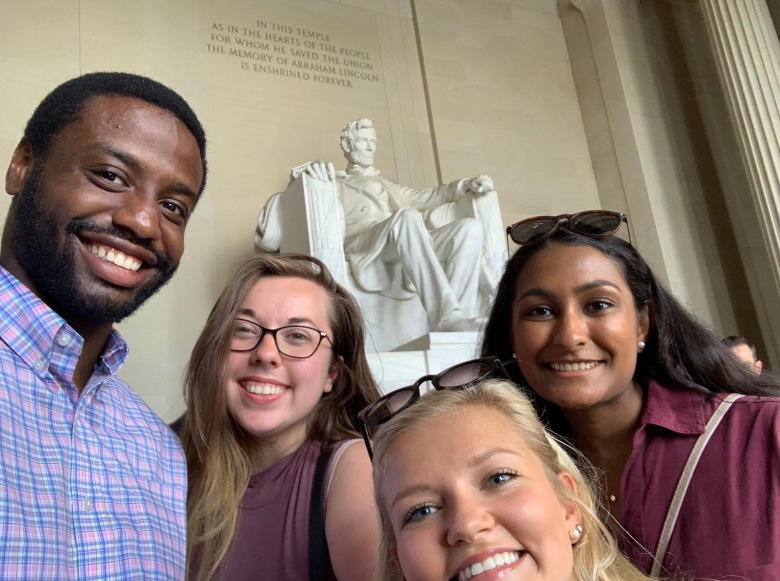
So, what is the point in me telling you all of this? This article is just as much a comment on mental health as it is on disability and travel. It’s taken a long time for me to see my worth and value in the world, and some days, it’s still hidden from view. Through travel, I have found my voice. The common thread between all of my trips is the theme of education, on both sides of the line. In each circumstance, my friends had to learn how to push my wheelchair over cobblestones, and I simultaneously had to learn to let them.
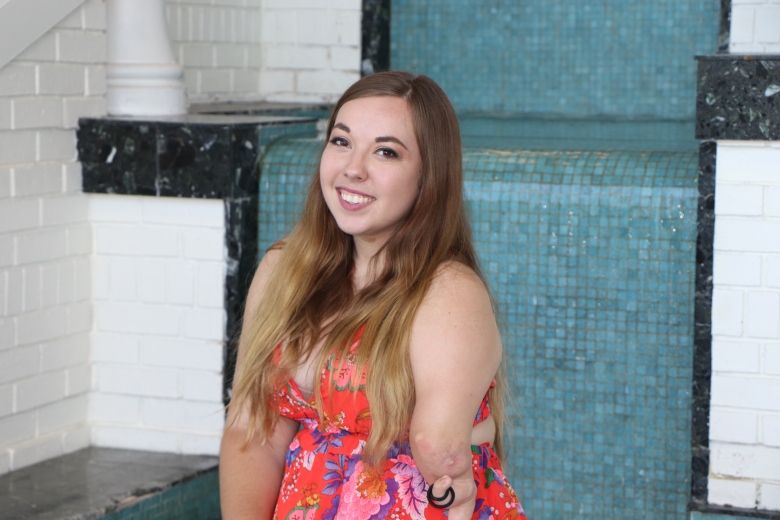
Originally published on August 12, 2019




